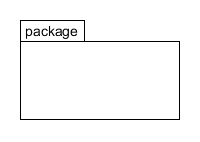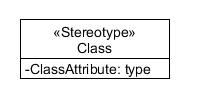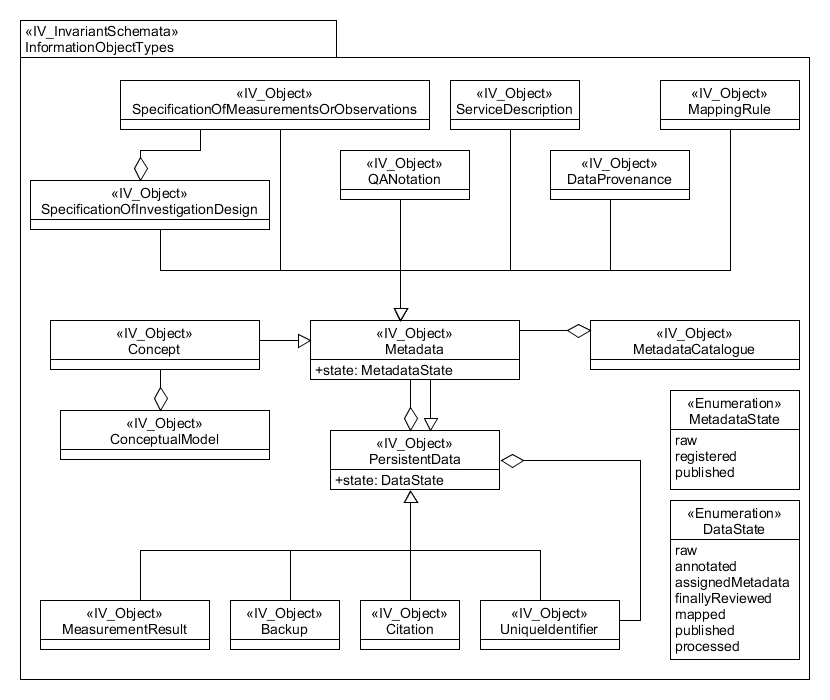Information Objects
IV Objects are represented using a class diagram.
Table 4 Notation for information object diagrams
| Figure
|
Description
|

|
A package, in UML notation, is a grouping element. Package is used "to group elements, and to provide a namespace for the grouped elements".
A package may contain other packages, thus providing for a hierarchical organization of packages.
Classes, objects, use cases, components, nodes, node instances etc. can all be organized as packages, enabling a manageable organization of the elements of UML models.
|

|
Classes are used to represent information objects in the RM.
Classes can have additional compartments to express properties (called attributes) and behaviours (called methods). Leaving the compartments blank means that the behaviour and attributes are undefined at the time of creating the diagram.
Name tag indicates the name of the class. Typically, classes are named using no spaces in camelcase.
The stereotype indicates the namespace where the class is grouped. Sometimes the stereotype can be an image. The image can be used in place of the figure. For ODP, the stereotype for information object is an “i” icon with a tag on top:
|

|
Generalisation relationship indicates that one of the two related classes (the subclass) is considered to be a specialized form of the other (the super class).
Generalisation is represented with an arc with a blank triangle decoration. The blank triangle points to the super class and the undecorated end is connected to the subclass.
The generalization relationship is also known as the inheritance or "is a" relationship.
|

|
Aggregation relationship indicates an association that represents a part-whole or part-of relationship.
Aggregation is represented with an arc with a blank rhombus decoration. The blank rhombus shape indicates the composite and the undecorated end of the arc is the component.
|

Figure 4 Example of an IV Object diagram
In the example diagram the package represents the collection of all information objects described by the ENVRI RM. The stereotype for the package is invariant schemata, which indicates that these are the parts of the model that are stable. The main objects are persistent data and metadata. The RM also provides a detailed description of each object in the text.
Information Actions
IV Actions are represented using an activity diagram with packages and activities




